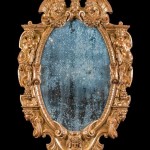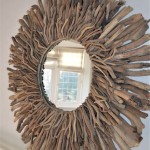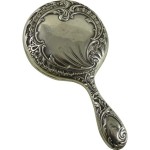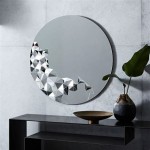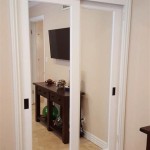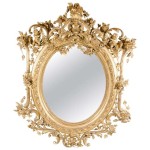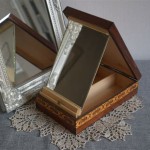Ideal Bathroom Mirror Height
Choosing the right bathroom mirror height can significantly impact both the functionality and aesthetics of a bathroom. A properly hung mirror caters to everyone using the space, regardless of height, and contributes to a well-designed and user-friendly environment. This article explores the factors influencing ideal bathroom mirror placement, offering guidelines and considerations for achieving optimal results.
Key Considerations for Bathroom Mirror Height
Several factors interplay in determining the ideal bathroom mirror height. These include:
*Eye Level of Users: The primary consideration is accommodating the eye level of the individuals using the bathroom. A mirror positioned too high or too low can be inconvenient and frustrating.
*Mirror Size and Shape: The dimensions of the mirror itself play a role in its placement. Larger mirrors naturally require a wider vertical span, while smaller mirrors offer more flexibility.
*Vanity Height: The height of the bathroom vanity directly impacts mirror placement. The mirror should complement the vanity, creating a cohesive and functional unit.
*Ceiling Height: In bathrooms with high ceilings, there's more leeway in mirror placement. Lower ceilings may necessitate a more strategic approach.
*Lighting: Consider the placement of bathroom lighting fixtures. The mirror should reflect light effectively, illuminating faces without creating glare or shadows.
*Overall Bathroom Design: The overall aesthetic of the bathroom should inform the placement of the mirror. The mirror should complement the design scheme and contribute to a harmonious atmosphere.
General Guidelines for Bathroom Mirror Height
While specific measurements may vary based on individual circumstances, some general guidelines provide a solid starting point:
*5-6 inches above the vanity: A common rule of thumb is to position the bottom edge of the mirror approximately 5-6 inches above the vanity top. This typically works well for standard vanity heights.
*Center of mirror at eye level: Ideally, the center of the mirror should be at eye level for the average user. This allows for comfortable viewing and ensures that individuals can see their reflection without straining.
*Top of mirror at least 6 inches below ceiling: Leaving adequate space between the top of the mirror and the ceiling contributes to visual balance and prevents the mirror from appearing cramped.
Adapting to Different User Heights
In households with significant height variations among users, some adjustments may be necessary to ensure comfortable viewing for everyone:
*Wider mirrors: Opting for a wider mirror can accommodate a broader range of eye levels, allowing multiple users to comfortably view their reflections simultaneously.
*Taller mirrors: A taller mirror also provides greater flexibility for users of different heights, ensuring everyone can see their full reflection.
*Tilting mirrors: While less common in residential bathrooms, tilting mirrors offer adjustable viewing angles, catering to individual preferences and heights.
Special Considerations for Small Bathrooms
In smaller bathrooms, maximizing space and light is crucial. Strategic mirror placement can contribute significantly to these goals:
*Large mirrors to create illusion of space: A larger mirror can visually expand the space, making a small bathroom appear more open and airy.
*Mirrors extending to ceiling: In bathrooms with lower ceilings, extending the mirror all the way to the ceiling can create an illusion of height.
*Mirrors with built-in lighting: Mirrors with integrated lighting can save valuable wall space and enhance illumination in a small bathroom.
Placement Over Medicine Cabinets
When placing a mirror over a medicine cabinet, certain adjustments are required:
*Consider medicine cabinet height: The height of the medicine cabinet dictates the starting point for mirror placement. The bottom of the mirror should be a few inches above the medicine cabinet.
*Maintain eye-level focus: While the medicine cabinet may raise the overall height, the focus should remain on maintaining eye-level viewing in the mirror.
*Balance with overall design: The combined height of the medicine cabinet and the mirror should be visually balanced within the bathroom's design.
Choosing the Right Mirror Shape
The shape of the mirror can also influence its ideal height placement:
*Rectangular mirrors: Rectangular mirrors are highly versatile and adapt well to various heights and vanity styles.
*Round or oval mirrors: Round and oval mirrors often require careful consideration of height to ensure proper centering and visual balance.
*Unique shaped mirrors: Unusually shaped mirrors may require customized placement based on their specific dimensions and design.
Ensuring Proper Lighting
Proper lighting is essential for maximizing the functionality of a bathroom mirror:
*Combine ambient and task lighting: Utilize a combination of ambient lighting for overall illumination and task lighting specifically focused around the mirror area.
*Vertical sconces flanking the mirror: Vertical sconces placed on either side of the mirror provide balanced and flattering light for facial viewing.
*Avoid overhead lighting directly above the mirror: Overhead lighting can create unflattering shadows and glare, making it less suitable for tasks like applying makeup or shaving.

Bathroom Mirror Size Calculator

Standard Bathroom Vanity Mirror Height Google Search Sizes Measurements Luxury Spa

Standard Height Of Bathroom Fittings Dimensions Small Sinks Sink Vanity

Bathroom Mirror Size Calculator

Plan Your Bathroom By The Most Suitable Dimensions Guide Engineering Discoveries Vanity Sizes Layout

How To Choose The Best Size Mirror Olde Good Things

Pin By Tania Rejalaga On Bathroom Ideas Vanity Sizes Modern Dimensions

How High Should You Hang The Mirror In A Bathroom With Photos Design Morsels

Mirrored Cabinets And Mirrors Guide Kohler

Bathroom Mirror Size Calculator Vanity Sizes Double Rectangular

